
Review on 🎮 Enhanced Streaming and Gaming: Actiontec Screenbeam MoCA 2.5 Network Adapter for Ethernet Over Coax (2 Pack) - 1 Gbps Ethernet, Coax to Ethernet Adapter (Model: ECB6250K02) by Anthony Parker

Building a MOCA internet network with an OTA antenna (without cable TV) over a coaxial cable.
See my picture for my detailed setup. I've spent hours researching the internet trying to figure out how to set up cable internet with a MoCA antenna and OTA (over the air) but never gotten any clear answers. I've seen many diagrams but none of them fitted my setup or explained it well. So I spent hours trying many different configurations and figuring out some details. First, here is the list of inputs I've tried to network/route: - Internet only from Comcast provider (NOT cable TV) - MoCA - Antenna OTA via cable TV). My router and cable modem are on the second floor along with my computer, but I wanted wired internet in the basement for all my streaming devices. Also, I wanted to use an OTA antenna, but the TV (TiVo) was in the basement and I had better reception with the antenna on the second floor. I rent a house and only coax cables run through the house so I had to do this with only coax cables installed. What I found from my experiments and which was not mentioned in any of the forums is this: The Comcast Internet signal (Internet only from my ISP) coming into my house was on the same frequency as the OTA antenna. I couldn't run both signals over the same coaxial cable at the same time. MoCA's network signal and Comcast's Internet signal can travel over the same coaxial cable (required to set up MoCA). So I set up the MoCA network first. Now I had a MoCA network signal (which includes the internet) AND a Comcast internet signal (Internet only, no cable TV signal) on a coax network. Then I just wanted to send the MoCA mesh and the OTA signal to my TV (TiVo box). This is only possible if I remove the Comcast internet signal and replace it with an OTA signal. So I used a diplexer to solve this problem. I took one of the coax cables coming from the splitter (see diagram) that carried both the MoCA and Comcast Internet signals and connected it to the duplexer's SAT input. This removes the Comcast internet signal and only lets the MoCA signal through. Next I connect the OTA antenna to the VHF/UHF input of the same crossover. Now the combined antenna signal from MoCA and OTA comes out of the crossover. Run a coaxial cable from the output of the diplexer to the input of the MoCA. You now have an OTA signal coming out of the MoCA's coaxial cable and Internet coming out of the MoCA's Ethernet port. Let me state this clearly again. If you have cable TV from your ISP, this will NOT work. This works if you ONLY get Internet from your ISP. My setup (see picture): Antenna: Indoor HDTV antenna with ClearStream Eclipse amplifier with Sure Grip technology - 50 mile range MoCA: Actiontec Bonded MoCA 2.0 Ethernet to Coax Adapter (ECB6200S02): Set of 2 Holland Dishpro -Satellite Diplexers - Dish Approved 2- Amplifier Version Splitter: 4-Way BAMF Coax Splitter Bidirectional MoCA Switch 5-2300MHz: 8-Port NETGEAR 10/100/1000Mbps Gigabit Ethernet Switch ( GS308) POE: Filter, MoCA Filter "POE" for CATV Coax Router ONLY: ASUS (RT-AC68U) Wireless-AC1900 Dual Band Gigabit Router Modem: ARRIS SURFboard SB6141 DOCSIS 3.0 Cable Modem - Retail Box - White
- Powerline network adapter
- So So
New products
Comments (0)
Top products in 🖧 Network Adapters
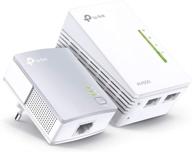
Enhance Your WiFi Range with TP-Link TL-WPA4220KIT 300Mbps AV500 Powerline WiFi Extender Start Kit

37 Review

Wi-Fi adapter D-link DWA-140, black

46 Review
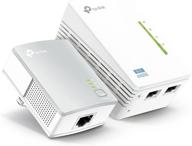
📶 Enhance and Expand Your Network with TP-Link AV600 Powerline WiFi Extender and WiFi Booster (TL-WPA4220 KIT)

44 Review
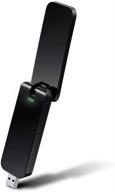
Enhance Internet Speed with TP-Link AC1200 Wireless Dual Band USB Adapter (Archer T4U V1)

40 Review
Another interesting products
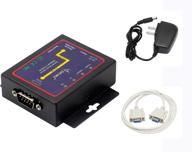
🔌 CERRXIAN RS232 to Ethernet Serial Device Server - TCP/IP Converter with 1Port DB9 RS232 Serial to Ethernet Connectivity

3 Review
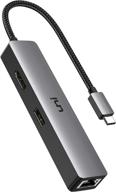
🔌 uni USB C Hub with Ethernet Adapter, 4K HDMI, Gigabit Ethernet, and 3 USB 3.0 Ports for MacBook Pro, iPad Pro, XPS

11 Review
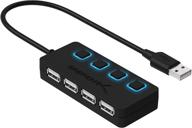
HB-UMLS Sabrent USB 2.0 Hub with 4 Ports and LED Power Switches for Each Port

12 Review
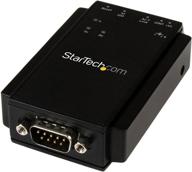
🔌 StarTech.com NETRS232 Serial to IP Ethernet Device Server - DIN Rail Mountable - Serial Device Server - Serial Over IP Device Server (Black)

4 Review

